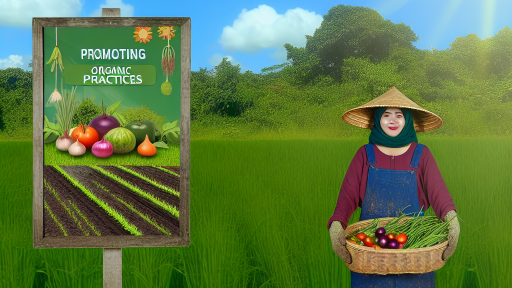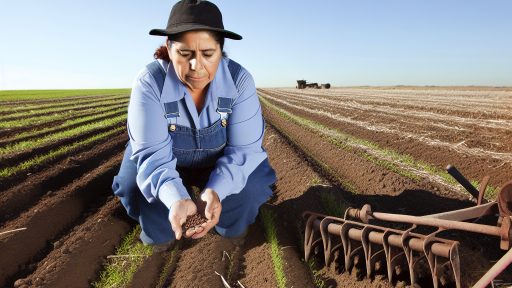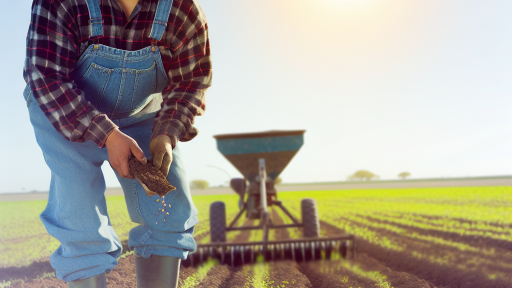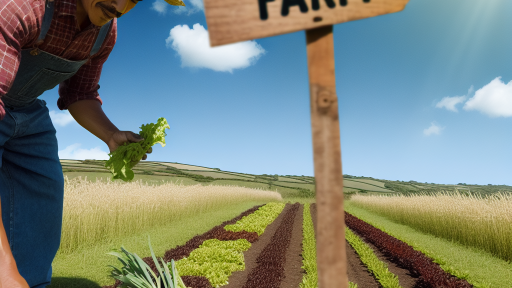Introduction to Cover Crops and Their Role in Organic Agriculture
Cover crops are crucial in enhancing soil health in organic agriculture.
They serve multiple purposes, including improving soil structure and fertility.
Farmers often use cover crops to protect the soil during fallow periods.
These crops help to prevent erosion caused by wind and water.
Additionally, cover crops enhance the organic matter content in the soil.
By introducing cover crops, farmers can boost microbial activity in the soil.
This activity contributes to more efficient nutrient cycling.
Types of Cover Crops
Various species of cover crops are available to farmers.
Legumes are popular due to their nitrogen-fixing abilities.
Examples include clover, vetch, and peas.
Non-leguminous cover crops like rye and oats are also widely used.
These crops provide biomass that enriches the soil when terminated.
Farmers should consider their specific goals when selecting a cover crop.
Benefits of Cover Crops in Organic Systems
Cover crops offer numerous benefits to organic farming systems.
They increase soil fertility and enhance nutrient retention.
Transform Your Agribusiness
Unlock your farm's potential with expert advice tailored to your needs. Get actionable steps that drive real results.
Get StartedFurthermore, these crops suppress weeds and reduce the need for herbicides.
Cover crops also attract beneficial insects, enhancing biodiversity.
By protecting the soil, cover crops improve water infiltration and retention.
Implementation Strategies
Farmers can implement cover crops in various ways.
One common method is planting them after the main crop is harvested.
This practice ensures that the soil remains covered and protected.
Another strategy involves intercropping, where cover crops grow alongside main crops.
This method efficiently utilizes space and resources in the field.
Each approach requires careful planning to maximize benefits.
Benefits of Cover Crops for Soil Health
Improving Soil Structure
Cover crops significantly enhance soil structure.
They create a network of roots that binds soil particles together.
This binding prevents soil erosion during heavy rains.
As roots decompose, they add organic matter to the soil.
Boosting Nutrient Availability
Cover crops play a vital role in nutrient cycling.
Their roots can access nutrients that crops cannot reach.
When cover crops decompose, they release these nutrients into the soil.
This process increases the nutrient profile of the soil.
Suppressing Weeds
Using cover crops helps suppress weed growth.
The dense foliage of cover crops shades the soil.
This shading limits sunlight and prevents weed seeds from germinating.
Consequently, farmers spend less time and resources on weed control.
Improving Water Retention
Cover crops enhance soil’s water retention capabilities.
Their roots create channels that promote water infiltration.
Additionally, they help to reduce runoff during heavy rains.
Showcase Your Farming Business
Publish your professional farming services profile on our blog for a one-time fee of $200 and reach a dedicated audience of farmers and agribusiness owners.
Publish Your ProfileThis retention leads to more available moisture for cash crops.
Encouraging Biodiversity
Cover crops support a diverse ecosystem in the soil.
They attract beneficial insects that assist in pest control.
Moreover, they provide habitat for earthworms and other soil organisms.
This biodiversity contributes to overall soil health and resilience.
Reducing Soil Compaction
Cover crops are effective at combating soil compaction.
Their roots penetrate hard soil layers, breaking them apart.
This process improves aeration and root penetration for subsequent crops.
Enhancing Microbial Activity
Cover crops stimulate microbial activity in the soil.
As they decompose, they provide food sources for soil microbes.
These microbes play a crucial role in nutrient cycling and soil health.
Overall Soil Health Improvement
Incorporating cover crops leads to enhanced overall soil health.
This results in improved crop yields and resilience against pests.
Farmers who adopt cover cropping practices benefit in many ways.
Types of Cover Crops Suitable for Organic Farming
Leguminous Cover Crops
Leguminous cover crops are valuable for enhancing nitrogen levels in the soil.
They have the unique ability to fix atmospheric nitrogen through symbiotic relationships with bacteria.
Common examples include crimson clover, hairy vetch, and field peas.
Furthermore, these crops improve soil structure and prevent erosion.
Grass Cover Crops
Grass cover crops are effective in reducing soil compaction and improving water infiltration.
Examples of grass cover crops include ryegrass, barley, and oat.
They can substantially reduce weeds by providing ground cover during fallow periods.
Additionally, these grasses enhance organic matter when incorporated into the soil.
Brassica Cover Crops
Brassica cover crops can suppress soil-borne pests and diseases.
Examples include mustard, radish, and turnip.
These plants contribute significant biomass, enhancing soil organic content.
Consequently, they improve soil health by promoting beneficial microbial activity.
Perennial Cover Crops
Perennial cover crops maintain soil cover throughout the year.
Examples include alfalfa and perennial ryegrass.
They provide habitat for beneficial insects and pollinators.
Additionally, these plants improve nutrient cycling and reduce erosion.
Mixes of Cover Crops
Mixing different cover crop species enhances the overall benefits to the soil.
These mixtures can combine leguminous, grass, and brassica crops.
Such diversity helps address multiple soil health issues simultaneously.
Moreover, using cover crop mixes improves resilience against pests and diseases.
Discover More: Managing Organic Farms with Precision Agriculture
How Cover Crops Contribute to Nutrient Cycling
Improving Soil Structure
Cover crops enhance soil structure by adding organic matter.
This organic matter improves soil aggregation and porosity.
Consequently, better soil structure leads to improved nutrient retention.
Additionally, it enhances water infiltration, reducing runoff.
Preventing Nutrient Leaching
Planting cover crops helps prevent nutrient leaching during heavy rains.
Showcase Your Farming Business
Publish your professional farming services profile on our blog for a one-time fee of $200 and reach a dedicated audience of farmers and agribusiness owners.
Publish Your ProfileThese crops absorb excess nutrients, keeping them in the soil.
Moreover, the roots of cover crops hold the soil together.
This anchoring effect reduces erosion and nutrient loss.
Nitrogen Fixation
Certain cover crops, like clover and vetch, fix atmospheric nitrogen.
This process increases nitrogen levels in the soil naturally.
As a result, subsequent crops benefit from this added fertility.
Furthermore, nitrogen-fixing crops support sustainable farming practices.
Encouraging Microbial Activity
Cover crops stimulate microbial activity in the soil.
This increased microbial life aids in the breakdown of organic matter.
Consequently, beneficial microorganisms help release nutrients into the soil.
Additionally, a diverse microbial community enhances soil health.
Enhancing Soil Fertility
Cover crops contribute to overall soil fertility through various mechanisms.
They decompose over time, releasing nutrients back into the soil.
Organic matter from cover crops also improves nutrient-holding capacity.
This, in turn, supports healthier, more productive crops in the future.
Find Out More: Organic Crop Planning for Year-Round Success
Managing Cover Crops: Best Practices for Planting and Termination
Choosing the Right Cover Crop
Selecting the appropriate cover crop enhances soil health effectively.
Consider the main objectives of cover cropping, such as erosion control or nutrient enhancement.
Popular options include clover, rye, and vetch.
Each species offers unique benefits, so choose according to your specific needs.
Additionally, consult local agricultural extension services for tailored recommendations.
Timing Your Planting
Timing is crucial for successful cover crop growth.
Plant cover crops after harvesting your primary crop for best results.
Ensure adequate time for growth before winter dormancy.
Moreover, follow local climate patterns to optimize planting schedules.
Soil Preparation
Prepare the soil adequately before planting cover crops.
Start by testing soil to understand its nutrient profile.
Then, amend the soil based on test results for optimal conditions.
Finally, till the soil lightly to create a suitable seedbed.
Planting Techniques
Utilize effective planting techniques to optimize growth.
Drilling seeds provides better soil-to-seed contact than broadcasting.
However, broadcasting can still be effective with proper soil moisture.
Consider row spacing and seed depth as critical factors.
Monitoring Growth and Health
Regular monitoring ensures your cover crops thrive throughout the growing season.
Check for signs of pests or diseases that might affect crop health.
Adjust water and nutrient supply according to the crop’s needs.
Moreover, maintain proper weed management to avoid competition.
Termination Practices
Knowing when and how to terminate cover crops is vital for success.
Aim to terminate them before they set seed to prevent unwanted growth.
Use mechanical methods, such as mowing or crimping, for termination.
Showcase Your Farming Business
Publish your professional farming services profile on our blog for a one-time fee of $200 and reach a dedicated audience of farmers and agribusiness owners.
Publish Your ProfileAlternatively, consider applying herbicides if necessary, but use them judiciously.
Integrating Cover Crops into Crop Rotations
Incorporate cover crops into your crop rotation for maximum benefits.
This practice enhances soil fertility and structure over time.
Additionally, it helps break pest and disease cycles.
Choose cover crops that complement your main crops for best results.
See Related Content: Soil Health 101: Techniques to Boost Crop Growth Naturally
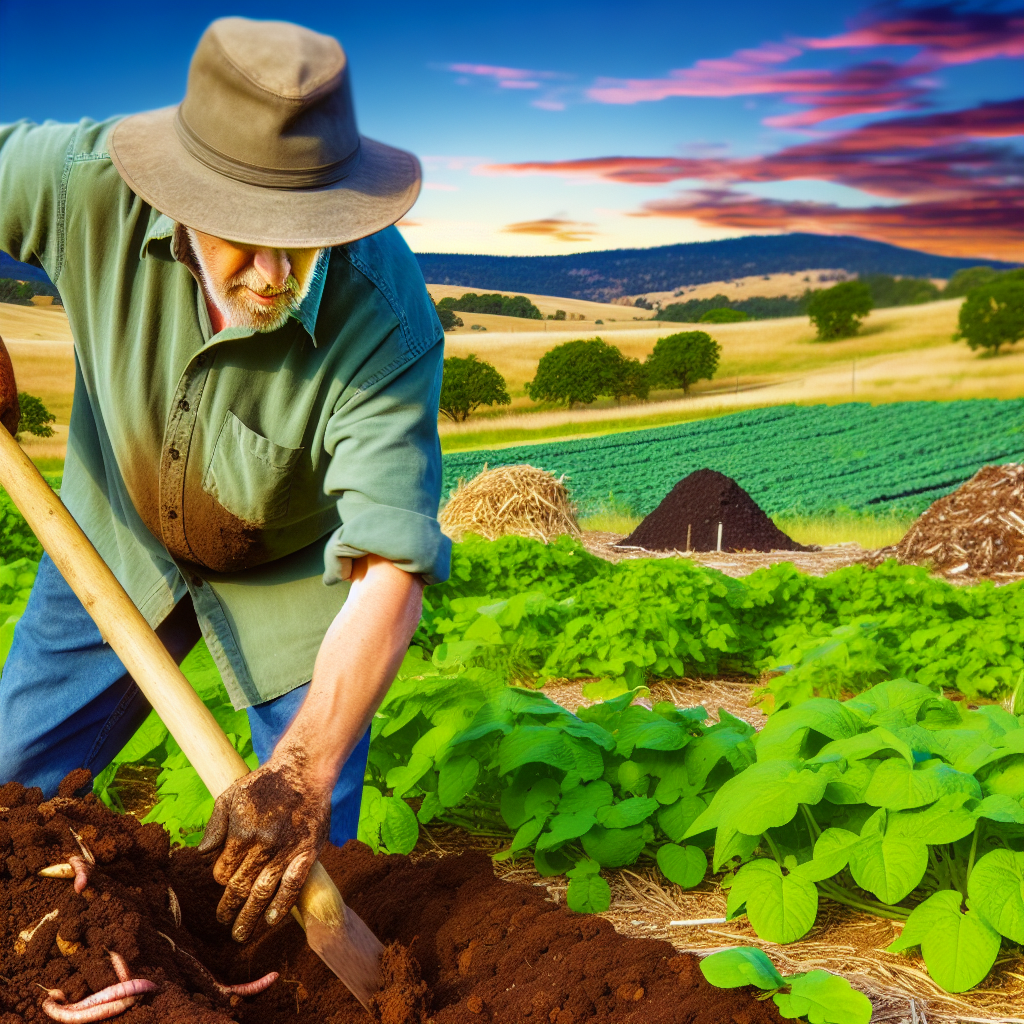
Cover Crop Selection Based on Regional Climate and Soil Type
Understanding Regional Climate
Climate influences the effective growth of cover crops.
Diverse climates, such as arid or humid, require specific cover crop types.
Farmers in cooler regions benefit from winter cover crops.
Conversely, those in warmer climates may prefer summer-growing varieties.
Evaluating Soil Type
Sandy soils drain quickly and may need moisture-retaining crops.
Clay soils, on the other hand, require plants that improve drainage.
Loamy soils support a wide variety of cover crops.
Selecting Cover Crops for Specific Regions
Farmers should consider local climate conditions when selecting cover crops.
For instance, rye thrives in colder climates.
In contrast, buckwheat performs well in warmer regions.
Legumes, like clover, improve nitrogen levels in various soils.
Integrating Cover Crops into Farming Practices
Include cover crops in crop rotation for optimal soil health.
They contribute to better soil structure and fertility.
Incorporating diverse species promotes biodiversity in the field.
Utilizing Local Resources and Expertise
Consult local agricultural extension services for specific recommendations.
They offer insights tailored to regional agricultural challenges.
Engaging with local farming communities can provide valuable experiences.
These resources help ensure the selected cover crops succeed.
See Related Content: Unlocking the Secrets of Crop Rotation for Year-Round Yield
Case Studies: Successful Use of Cover Crops in Organic Farms
Introduction to Case Studies
Cover crops play a vital role in enhancing soil health on organic farms.
They improve nutrient cycling and maintain soil structure over time.
In this section, we explore several successful examples.
Farm One: Green Acres Organic Farm
Green Acres Organic Farm in Nebraska has implemented diverse cover crops effectively.
They primarily use rye and clover to enhance soil fertility.
As a result, crop yields have increased significantly.
Additionally, the farm reported improved moisture retention.
This led to reduced irrigation costs during dry seasons.
Integrated Pest Management
The cover crops act as a habitat for beneficial insects.
This practice aids in controlling pest populations naturally.
Farmers at Green Acres have noted a decline in pesticide use.
Thus, it promotes a healthier ecosystem on the farm.
Farm Two: Sunny Ridge Farms
Sunny Ridge Farms in Wisconsin adopted a creative cover cropping strategy.
The farm utilizes a mix of hairy vetch and buckwheat.
This combination effectively suppresses weeds during the off-season.
Showcase Your Farming Business
Publish your professional farming services profile on our blog for a one-time fee of $200 and reach a dedicated audience of farmers and agribusiness owners.
Publish Your ProfileThe owners report reduced competition for main crops.
Consequently, they have seen higher overall productivity.
Soil Erosion Control
Cover crops significantly reduce soil erosion during heavy rains.
Farmers at Sunny Ridge observe less sedimentation in nearby waterways.
This practice aligns with their commitment to environmental stewardship.
Farm Three: Maple Lane Organic Vineyard
Maple Lane Incorporated has taken a unique approach with their vineyard.
They use cover crops such as daikon radish and winter barley.
These crops improve soil structure while providing nutrients.
The vineyard’s grape quality has noticeably improved over recent years.
Moreover, the farm observed an increase in biodiversity.
Wildlife Habitat Enhancement
Cover crops serve as shelter for various wildlife species.
This supports ecological balance within the vineyard.
The owners embrace sustainable farming practices through this initiative.
Implications of Case Studies
These successful implementations of cover crops illustrate their effectiveness.
Organic farms can significantly benefit from such practices.
As seen in these case studies, cover crops enhance soil health remarkably.
Farmers are encouraged to adopt similar strategies to optimize their operations.
Challenges and Considerations in Implementing Cover Crops
Understanding Common Challenges
Farmers face various challenges when implementing cover crops.
Firstly, improper timing can hinder the success of cover crops.
Likewise, selecting the wrong species can lead to poor results.
Farmers often have limited resources for proper cover crop management.
Moreover, soil type can affect the effectiveness of cover crops.
Assessing Economic Considerations
Implementing cover crops requires an initial investment.
Farmers must consider seed costs and planting equipment expenses.
Beyond direct costs, there are potential labor costs associated with maintenance.
However, it is vital to recognize the long-term savings cover crops can provide.
For example, improved soil fertility can reduce fertilization expenses.
Learning from Successful Practices
Farmers can benefit from sharing successful cover crop experiences.
Networking with local agricultural groups can offer valuable insights.
Furthermore, workshops and educational programs can enhance knowledge.
Implementing proven practices from successful peers can increase confidence.
Learning from others often leads to better outcomes.
Overcoming Environmental Constraints
Different regions have unique environmental challenges affecting cover crop choices.
For example, extreme weather conditions can impact growth cycles.
Farmers in drought-prone areas must select resilient cover crops.
In contrast, those in wet climates need to prevent waterlogging.
Thus, consulting local agricultural extension offices can provide tailored advice.
Integrating Cover Crops into Existing Systems
Integration requires careful planning and strategizing.
Farmers must evaluate the compatibility of cover crops with their main crops.
Additionally, they should assess how cover crops fit into their overall rotation plan.
Showcase Your Farming Business
Publish your professional farming services profile on our blog for a one-time fee of $200 and reach a dedicated audience of farmers and agribusiness owners.
Publish Your ProfileTiming is critical, especially concerning planting and harvesting schedules.
A well-customized approach increases the likelihood of success.
Additional Resources
Critical review of the impact of cover crops on soil properties …
Cover Cropping to Improve Climate Resilience | USDA Climate Hubs

